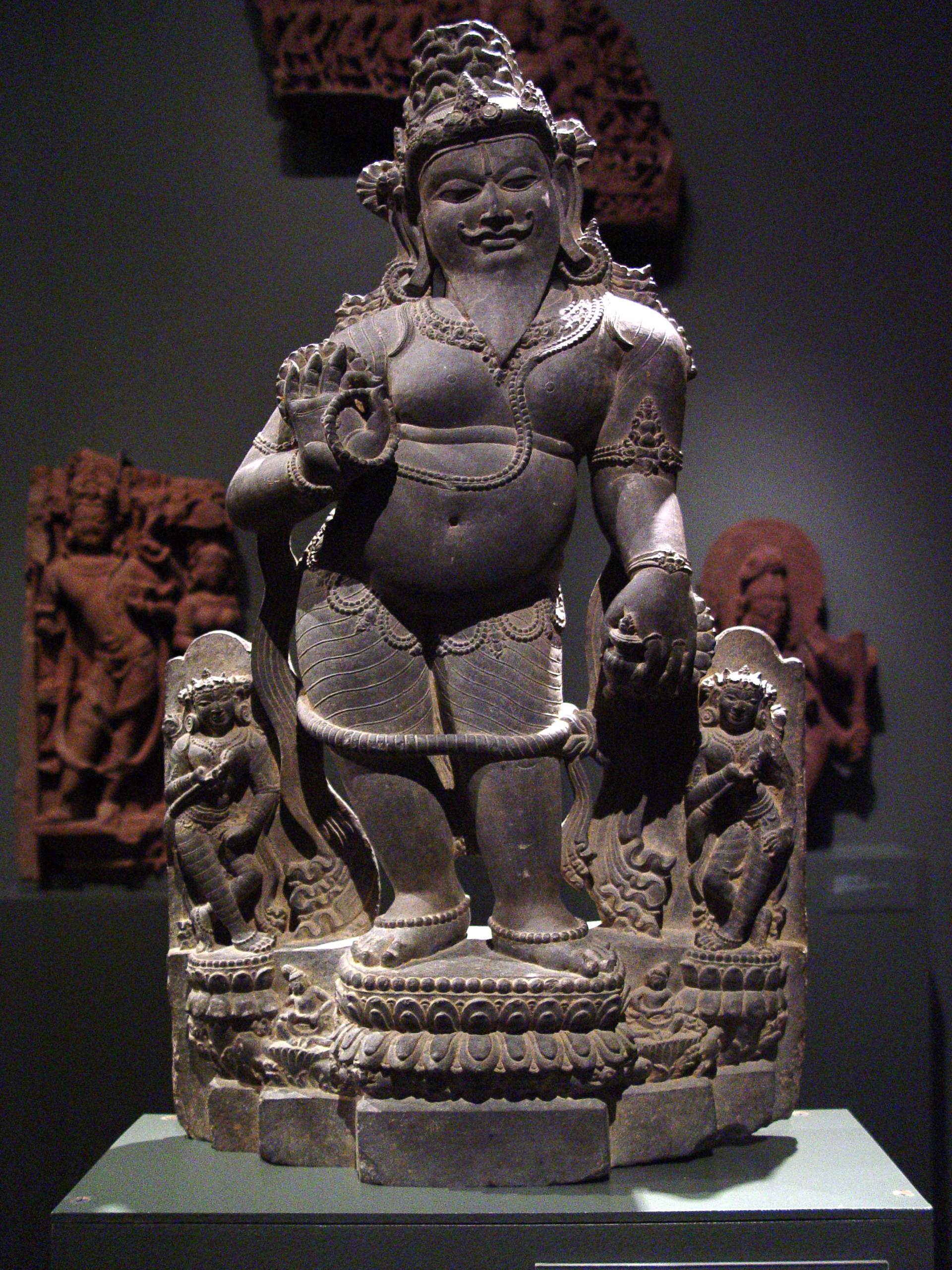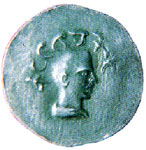|
Tiruppur - TUP
Tiruppur or Tirupur ( ), is a city and municipal corporation in the Indian state of Tamil Nadu. Located on the banks of the Noyyal river in Western Tamil Nadu, it is the fourth largest city in the state. It is the administrative capital of Tiruppur district and is administered by the Tiruppur Municipal Corporation. The region was ruled by the Cheras during the Sangam period between the 1st and the 4th centuries CE. It was under the rule of early Pandyas medieval Cholas, Later Cholas and the Vijayanagara Empire till the 15th century followed by the Nayaks who introduced the Palayakkarar system. In the later part of the 18th century, the it came under the Kingdom of Mysore and later the British Raj as a part of Madras Presidency. The region played a prominent role in the Poligar Wars. Post Indian Independence in 1947, Tiruppur was part of Coimbatore district. It was established as the capital of the newly formed Tiruppur district in 2009. Tiruppur tis a part of Tiruppur L ... [...More Info...] [...Related Items...] OR: [Wikipedia] [Google] [Baidu] |
Registrar General And Census Commissioner Of India
Registrar General and Census Commissioner of India, founded in 1961 by the Government of India Ministry of Home Affairs, for arranging, conducting and analysing the results of the demographic surveys of India including Census of India and Linguistic Survey of India. The position of Registrar General and Census Commissioner is now held by a civil servant holding the rank of Additional Secretary. History The Indian Census is the largest single source of a variety of statistical information on different characteristics of the people of India. The first census of India was conducted in the 1872 and attempted to collect data across as much of the country as was feasible. The first of the decennial censuses took place in 1881. Until 1961, responsibility for arranging, conducting and analysing the results of the census was exercised by a temporary administrative structure that was put in place for each census and then dismantled. From that time on, the office of the Registrar G ... [...More Info...] [...Related Items...] OR: [Wikipedia] [Google] [Baidu] |
Polygar
Palaiyakkarars, or Poligar, Palegara (as the British referred to them) in Andhra, Karnataka and Tamil Nadu were the holders of a small kingdom as a feudatory to a greater sovereign. Under this system, ''palayam'' was given for valuable military services rendered by any individual. The word ''pālayam'' means domain, a military camp, or a small kingdom. This type of Palayakkarars system was in practice during the rule of Pratapa Rudhra of Warangal in the Kakatiya Dynasty, Kakatiya kingdom. The system was put in place in Tamil Nadu by Viswanatha Nayak, when he became the Nayak ruler of Madurai in 1529, with the support of his minister Ariyanatha Mudaliar. Traditionally there were supposed to be 72 Palayakkarars. The majority of those Palaiyakkarar, who during the late 17th- and 18th-centuries controlled much of the Telugu people, Telugu region as well as the Tamil area, had themselves come from the Kallar (caste), Kallar, Maravar and Vatuka communities. Most palayakkars in western ... [...More Info...] [...Related Items...] OR: [Wikipedia] [Google] [Baidu] |
Madurai Nayaks
The Madurai Nayakas were a Telugu dynasty * * * * * who ruled most of modern-day Tamil Nadu, India, with Madurai as their capital. The Madurai Nayaks had their origins in the Balija warrior clans of present-day Andhra Pradesh. * * * * * * * * * * * * * * * * * * The Nayak reign which lasted for over two centuries from around 1529 to 1736 was noted for its achievements in arts, cultural and administrative reforms, revitalization of temples previously ransacked by the Delhi Sultans, and the inauguration of a unique architectural style. It was founded by Vishwanatha Nayaka. The dynasty consisted of 13 rulers, of whom nine were kings, two were queens, and two were joint-kings. The most notable among them were king Tirumala Nayaka and queen Rani Mangammal. Foreign trade was conducted mainly with the Dutch and the Portuguese, as the British and the French had not yet made inroads into the region. History Origins The Dalavay Agraharam Plates of Venkata I, me ... [...More Info...] [...Related Items...] OR: [Wikipedia] [Google] [Baidu] |
Vijayanagara Empire
The Vijayanagara Empire, also known as the Karnata Kingdom, was a late medieval Hinduism, Hindu empire that ruled much of southern India. It was established in 1336 by the brothers Harihara I and Bukka Raya I of the Sangama dynasty, belonging to the Yadava clan of Lunar dynasty, Chandravamsa lineage. The empire rose to prominence as a culmination of attempts by the southern powers to ward off Muslim invasions of India, Muslim invasions by the end of the 13th century. At its peak in the early 16th century under Krishnadevaraya, it subjugated almost all of Southern India's ruling dynasties and pushed the Deccan sultanates beyond the Tungabhadra River, Tungabhadra-Krishna River, Krishna River doab region, in addition to annexing the Gajapati Empire (Odisha) up to the Krishna River, becoming one of the most prominent states in India. The empire's territory covered most of the lands of the modern-day Indian states of Karnataka, Andhra Pradesh, Tamil Nadu, Kerala, Goa, and some pa ... [...More Info...] [...Related Items...] OR: [Wikipedia] [Google] [Baidu] |
Later Cholas
The Chola Empire, which is often referred to as the Imperial Cholas, was a medieval thalassocratic empire based in southern India that was ruled by the Chola dynasty, and comprised overseas dominions, protectorates and spheres of influence in southeast Asia. The power and the prestige the Cholas had among political powers in South, Southeast, and East Asia at its peak is evident in their expeditions to the Ganges, naval raids on cities of the Srivijaya Empire on the island of Sumatra, and their repeated embassies to China. K. A. Nilakanta Sastri, ''A History of South India'', p. 158 The Chola fleet represented the peak of ancient Indian maritime capacity. Around 1070, the Cholas began to lose almost all of their overseas territories but the later Cholas (1070–1279) continued to rule portions of southern India. The Chola empire went into decline at the beginning of the 13th century with the rise of the Pandyan dynasty, which ultimately caused the Chola's downfall. K. A. N ... [...More Info...] [...Related Items...] OR: [Wikipedia] [Google] [Baidu] |
Sangam Period
The Sangam literature ( Tamil: சங்க இலக்கியம், ''caṅka ilakkiyam''), historically known as 'the poetry of the noble ones' ( Tamil: சான்றோர் செய்யுள், ''Cāṉṟōr ceyyuḷ''), connotes the early classical Tamil literature and is the earliest known literature of South India. The Tamil tradition links it to legendary literary gatherings around Madurai in the ancient Pandya kingdom. It is generally accepted by most scholars that the historical Sangam literature era, also known as the Sangam period, spanned from 100 BCE to 250 CE, on the basis of linguistic, epigraphic, archaeological, numismatic and historical data; though some scholars give a broader range of 300 BCE to 300 CE. The Eighteen Greater Texts (Patiṉeṇmēlkaṇakku), along with the Tamil grammar work Tolkappiyam, are collectively considered as Sangam literature. These texts are classified into the Ettuttokai (Eight Anthologies) and Pattupattu (T ... [...More Info...] [...Related Items...] OR: [Wikipedia] [Google] [Baidu] |
Chera Dynasty
The Chera dynasty ( or Cēra, ), also known as Keralaputra, from the early historic or the Sangam period in Tamil-speaking southern India, ruled over parts of present-day states Kerala and Tamil Nadu. The Cheras, known as one of the mu-ventar (the Three Crowned Kings) of Tamilakam (the Tamil Country) alongside the Cholas and Pandyas, have been documented as early as the third century BCE. The Chera country was geographically well placed at the tip of the Indian peninsula to profit from maritime trade via the extensive Indian Ocean networks. Exchange of spices, especially black pepper, with Middle Eastern or Graeco-Roman merchants is attested to in several sources. Chera influence extended over central Kerala and western Tamil Nadu until the end of the early historic period in southern India. The Cheras of the early historical period (c. second century BCE – c. third/fifth century CE) had their capital in interior Tamil country ( Vanchi-Karur, Kongu Nadu), and ports/capit ... [...More Info...] [...Related Items...] OR: [Wikipedia] [Google] [Baidu] |
Tiruppur Municipal Corporation
Tiruppur City Municipal Corporation is a civic body that governs Tiruppur, Tamil Nadu, India. The corporation consists of 60 wards each represented by a councilor. The Mayor elected by the council is the leader of the civic body. History Tiruppur was formed as a small union and on 1 December 1947, it became a town with the inclusion of Mannarai, Thennamapalayam, Karuvampalayam, N.Pudhupalayam and Valipalayam villages. On 26 October 2008 it became a Municipal Corporation. Areas under Tiruppur Corporation * erstwhile Tirupur Municipality * Nallur Municipality * Velampalayam Municipality * Andipalayam * Muruganpalayam * Neripperichal * Thottipalayam * Chettipalayam * Mannarai * Muthanampalayam * Veerapandi * Mangalam Mangalam is a census town in Tiruppur district in the Indian state of Tamil Nadu. Geography Mangalam is located at . It has an average elevation of 32 metres (104 feet). It is located 1 kilometer toward the South from District headqua ... * ... [...More Info...] [...Related Items...] OR: [Wikipedia] [Google] [Baidu] |
Tiruppur District
Tiruppur District is one of the 38 districts of the Indian States and territories of India, state of Tamil Nadu, formed in 22 February 2009. Dharapuram was the largest taluk by area in the district. The district is well-developed and industrialized. The Tiruppur banian industry, the cotton market, Kangayam cattle, Kangeyam bull and Uthukkuli butter, among other things, provide for a vibrant economy. The city of Tiruppur is the administrative headquarters for the district. As of 2011, the district had a population of 2,479,052 with a sex-ratio of 989 females for every 1,000 males. History The district is named after the city of Tiruppur. In Mahabaratha, Arjuna (the third of the Pandavas) returned the cattle captured by the enemies and returned to Dharapuram (நிறை மீட்டல், ''Nirai Meetal''). It eventually become ''Nirai Thiruputhal'' and become Tiruppur. Since the 1990s, the formation of the new Tiruppur district had been urged by the exporters of Tiruppur. ... [...More Info...] [...Related Items...] OR: [Wikipedia] [Google] [Baidu] |




